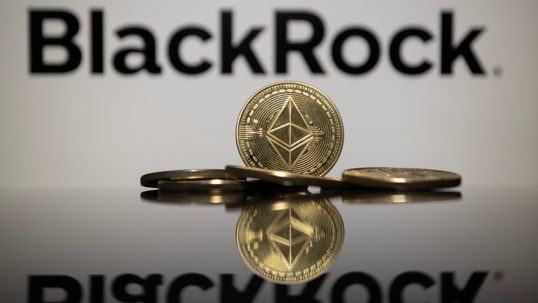SEC Takes Major Step Toward Approving Spot Ether ETFs
R Tamara de Silva
Today the Securities and Exchange Commission (SEC) made a significant move towards the introduction of spot Ether (ETH) exchange-traded funds (ETFs). The SEC approved 19b-4 forms filed by several prominent issuers, marking a pivotal moment for the cryptocurrency and financial markets. Link to Order
Understanding the 19b-4 Form
Form 19b-4 is utilized by self-regulatory organizations (SROs) to propose rule changes to the SEC. The recent approval of these forms means that the SEC has sanctioned the necessary rule changes to facilitate the listing and trading of spot Ether ETFs on various exchanges. This approval is a crucial regulatory hurdle that these issuers have successfully navigated.
Notable Issuers and Institutional Interest
The issuers whose 19b-4 filings were approved include major financial entities such as VanEck, BlackRock, Fidelity, Grayscale, Franklin Templeton, ARK 21Shares, Invesco Galaxy, and Bitwise. The involvement of these heavyweights underscores the strong institutional interest and support for spot Ether ETFs. Their participation highlights the growing recognition of cryptocurrency assets within traditional financial sectors.
The Path Forward: S-1 Filings
Although the approval of 19b-4 forms is a critical step, it is not the final one. To bring spot Ether ETFs to market, issuers must also submit S-1 forms. These forms are registration statements for securities offerings and require SEC approval before investors can purchase the ETFs. The S-1 approval process involves a comprehensive review of the ETF’s structure, operations, and disclosures to ensure adequate investor protection.
Market Implications
Upon approval of the S-1 filings, investors will gain the ability to buy spot Ether ETFs. This development could lead to increased market liquidity and provide broader access to Ether for a diverse range of investors. Consequently, it may drive further adoption and price discovery for Ether, significantly impacting the cryptocurrency market.
Why This Matters
The approval of spot Ether ETFs is more than just a regulatory milestone; it represents a bridge between traditional financial markets and the rapidly evolving world of cryptocurrencies. For investors, this means greater accessibility to Ether without the need to directly purchase and manage the digital asset. ETFs can offer a safer and more regulated way to invest in cryptocurrencies, appealing to institutional investors and retail investors alike. This can lead to increased market stability and trust.
Moreover, the introduction of spot Ether ETFs could stimulate broader acceptance and integration of digital assets within the financial ecosystem. It signifies a growing acceptance of cryptocurrencies as legitimate investment vehicles, paving the way for future innovations and financial products centered around blockchain technology.
Concerns Over Surveillance
However, there are concerns regarding the sufficiency of surveillance-sharing agreements in preventing fraud and manipulation. Each exchange has a comprehensive surveillance-sharing agreement with the Chicago Mercantile Exchange (CME) via their common membership in the Intermarket Surveillance Group. This facilitates the sharing of information available to the CME through its surveillance of its markets, including the CME Ether futures market.
Spot Ether, however, does not trade on the CME, and the CME does not engage in surveillance of spot Ether markets. This raises questions about the effectiveness of these agreements in detecting and preventing fraud and manipulation in the proposed ETFs holding spot Ether. If a manipulator engages in misconduct on the CME itself, the CME's surveillance can reasonably be expected to detect such activities. However, if the misconduct occurs outside of the CME, its surveillance may not detect the manipulation unless it also impacts the CME Ether futures market. Thus, it is critical to assess whether and to what extent fraud or manipulation in the spot Ether market impacts the CME Ether futures market.
The SEC's decision draws parallels with the Spot Bitcoin ETP Approval Order, where the Commission concluded that having a comprehensive surveillance-sharing agreement with a U.S.-regulated market consistently highly correlated with the ETPs' underlying assets (spot Bitcoin) was sufficient to prevent fraud and manipulation. The correlation analyses in the Ether context show high daily correlations between CME Ether futures and spot Ether markets, but intra-day correlations need further scrutiny to ensure consistent detection of fraudulent activities.

In Closing
The SEC's approval of the 19b-4 forms represents a major milestone towards the launch of spot Ether ETFs. However, the journey is not yet complete. Final approval of the S-1 filings remains essential before these products can become available to investors. This ongoing regulatory process continues to shape the landscape of cryptocurrency investments and reflects the evolving nature of financial markets.
Stay tuned for more updates as the SEC progresses with the approval process and as spot Ether ETFs move closer to reality.
#SEC #Spot Ether ETFs #19b-4 forms #Cryptocurrency #Financial markets #S-1 filings #VanEck #BlackRock #Fidelity #Grayscale #Franklin Templeton #ARK 21Shares #Invesco Galaxy #Bitwise #Blockchain technology #Digital assets #Surveillance-sharing agreement #CME


